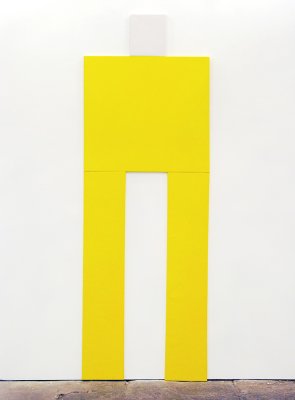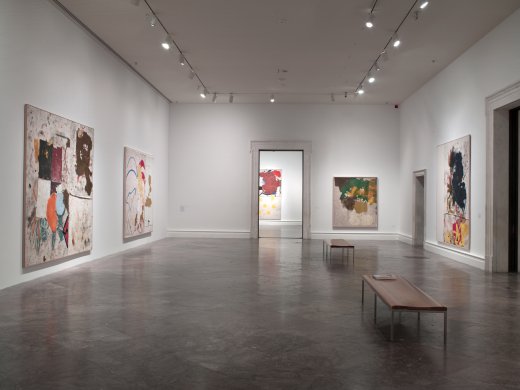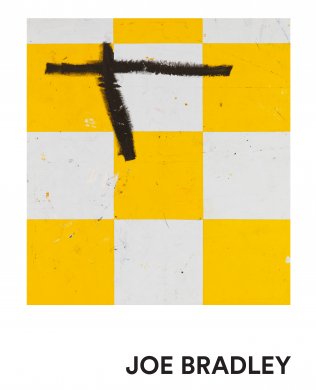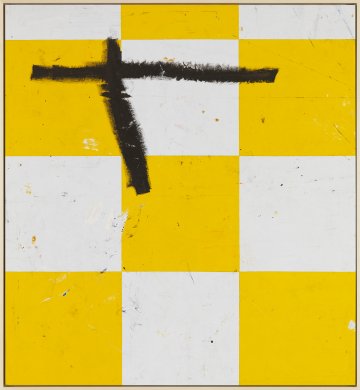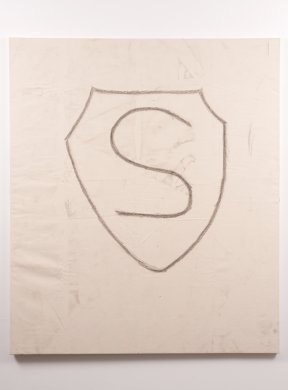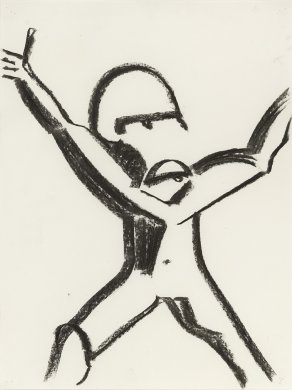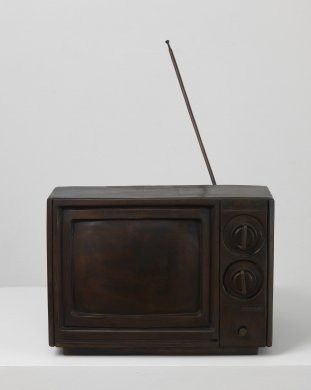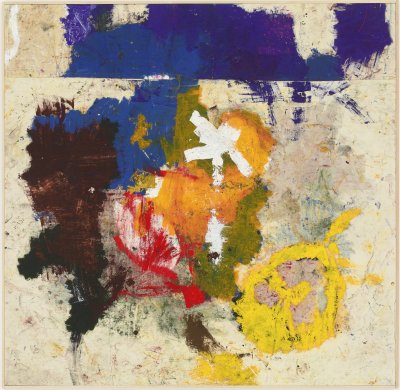Joe Bradley’s mid-career survey is currently on view at the Albright-Knox. On the blog, we’re taking a closer look at each of the artist’s diverse bodies of work from the past decade, beginning with his modular paintings.
Following the first solo show of his work, Bradley kept thinking about how his paintings—some single-panel, some monochrome, some more object-like—related to one another but maintained their own distinct sensibilities and personalities. The artist’s modular paintings grew out of this notion that the paintings could be different characters, related bodies that vary in arrangement and color.
Many, like The Fisherman’s Friend, feature a rectangular stretcher that reads as a torso when installed above two long, skinny “legs” firmly standing on the floor and topped with a small square “head.” Bradley’s former college professor, the artist Dike Blair (American, born 1952), has written about the sense of humor conveyed in The Fisherman’s Friend:
The dull, dirty white canvas of the head looks and feels like some soiled cotton sailor’s cap, and it’s perfectly sympathetic to the rain-slicker yellow of the body. The yellow acrylic paint almost covers the texture of the canvas, so it closely approximates the look and feel of rubber-coated fabric. I don’t think this kind of canny representation is the point of the painting, but it’s certainly a great byproduct.
